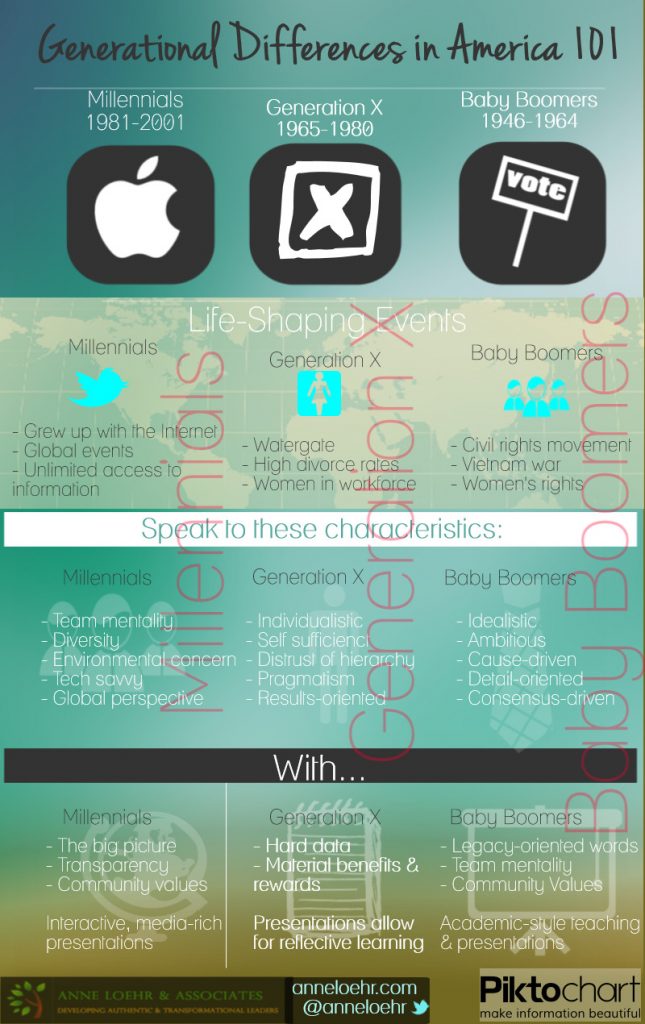Find and share the latest thinking and resources on leadership topics. From quick thought-provoking posts to recommended articles and books, you’ll find a treasure-trove of curated content.
Infographic: Generational Differences in America 101
I’ve written a lot about the different generations, and find understanding the root of their differing behavior and corresponding attitudes to be both a fascinating topic and a valuable management tool. As with everything in management, increasing the understanding between team members helps build positive and productive relationships. Also, with this understanding, it is easier to identify and focus on complimentary strengths, and opportunities for growth.
The infographic below is specific to America. It identifies the life shaping events of each generation, how those events lead to specific characteristics, and how to speak to those characteristics as a manager. Learn the language of each generation to increase employee engagement, and help your employees grow and develop. Read more.
About the author:
Anne Loehr is the President of Anne Loehr and Associates, co-founder of Safaris for the Soul, and an Executive Leadership Coach for Mariposa Leadership, Inc. For more good reads, visit Anne Loehr’s personal blog at: www.anneloehr.com/blog/.
MORE

